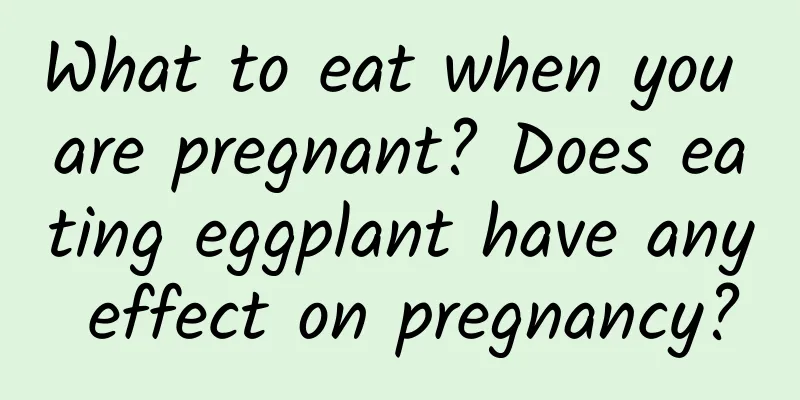Zhong Xue Gao's "unmeltable and unburnable" behavior has sparked controversy, but please don't misunderstand it as a food additive

|
Zhong Xue Gao ice cream is caught in controversy over "additives" because it does not melt at high temperatures. Is "carrageenan" really a scourge? The reason behind this reflects people's deep misunderstanding of food additives Compiled by New Media Editor Lv Bingxin Recently, the issue of "Zhong Xue Gao ice cream not melting after being left at room temperature of 31 degrees for one hour" has caused heated discussions. On July 5, a video of a netizen using a lighter to light a Zhong Xue Gao ice cream that did not seem to melt has again attracted attention. Many netizens speculated that the ice cream would not melt because thickeners and coagulants were added. Some netizens also worried whether it was still edible if the ice cream would not melt. In response to this, Zhong Xue Gao officials responded twice, saying that there is no ice cream that does not melt, because Zhong Xue Gao Sea Salt Coconut Ice Cream contains high solids and little water, and it will naturally become viscous after it is completely melted, and will not completely spread out and become a puddle of water. At the same time, as for the additive carrageenan that consumers are concerned about, it comes from red algae and is widely used in ice cream, popsicles and drinks. It complies with the national standard GB 2760-2014 "National Food Safety Standard Food Additives Usage Standard" and can be eaten with confidence. In its latest statement, Zhong Xue Gao officials emphasized that we believe that it is unscientific to judge the quality of ice cream by baking, drying or heating it. We hope and welcome the public and the media to investigate and popularize related issues from a scientific standpoint. ▲ Zhong Xuegao issued a statement in response to doubts Some people expressed their understanding of the response, but some netizens did not buy into the explanation and still insisted that the ice cream did not melt easily because of the excessive additives. What is the truth? When it comes to food additives, people generally believe that they will definitely affect health and regard them as a "disaster". However, do food additives really cause food safety problems? What are food additives? Why are many people afraid of them? Ice cream is hard to melt, it's really not the glue "Just added a 'little' amount of carrageenan to enhance the taste, a new fireproof, waterproof and heat-insulating material is here!" "Why should I spend more than 20 yuan to buy carrageenan?" "What is baked is not ice cream, but your solid glue." After the incident "Zhong Xuegao ice cream does not melt after baking" became a hot search, some netizens said so. In fact, the phenomenon of cold drinks not melting easily has been noticed in the past few years. Ruan Guangfeng, a master of nutrition and food safety and an expert member of the China Internet Joint Rumor Refutation Platform, pointed out at the time that the statement that "the more additives, the harder it is to melt" is inaccurate. Zhong Kai, director of the Kexin Food and Health Information Exchange Center, expressed the same view in an article on his official account: "The melting speed of popsicles/ice cream is not the gold standard for judging the quality of the product. There are many factors that affect the melting speed, mainly related to the ingredients. But if it doesn't melt within an hour, it's a joke. It must have melted, but it still has a little shape." Zhong Xue Gao's official statement also disclosed the ingredients of the ice cream: the main ingredients of the sea salt coconut ice cream formula are milk (35.8%), cream (19.2%), coconut milk (11.2%), sweetened condensed milk (7.4%), whole milk powder (6.0%), etc. The protein content of the product is 6.3g/100g, and the solid content is about 40%. Zhong Kai said that the dry matter (such as protein, fat and carbohydrates) contained in Zhong Xuegao is about 40%, which is indeed a bit too much, so it is normal that it melts slowly. "In other words, the ingredients are solid, and the high price has a reason." If there is no dry stuff in the ice cream, it will melt faster, such as popsicles made with three essences (saccharin, flavoring, and pigment). Thickeners (gels) only play an auxiliary role in slowing down the melting rate. They are very common in popsicles/ice creams. Their main function is to change the ice crystal structure and participate in forming a soft taste. At the same time, thickeners can also enhance the stability of the product texture and slow down the melting rate. Looking at the series of controversies caused by the "glue" in Zhong Xue Gao, what is actually reflected behind it is the public's distrust and lack of understanding of food additives. Zhong Kai said that when many people talk about "glue", they think of glue or chemical raw materials, but if you think of pork skin jelly, jelly, and ice powder, it's fine. In fact, the principle is the same. Among the thickeners currently approved for use by the country, there are about 20 with the word "glue". Among them, the most are extracted from plants, and most of them come from the seeds of leguminous plants. For example, guar gum and pectin come from plants. The carrageenan in Zhong Xuegao ice cream comes from algae. According to Zhong Xuegao’s statement, the amount of carrageenan added to its sea salt coconut ice cream is about 0.032 grams, which does comply with the provisions of the national standard GB 2760-2014 "National Food Safety Standard for the Use of Food Additives". Fear of food additives Originated from the public's call for food safety When it comes to the psychological shadow of food additives, many people will first think of the "melamine incident", and then the "Sudan Red", "clenbuterol" and "Diaobaikuai" incidents. Food additives seem to have become a "disaster", and have repeatedly pushed people's attention to food safety issues to a new high. However, are food additives equivalent to food safety issues? "We must first clarify two concepts, one is additives, and the other is food additives." Sun Baoguo, an academician of the Chinese Academy of Engineering, president of Beijing Technology and Business University, and vice chairman of the Beijing Association for Science and Technology, once pointed out in a speech at the 2022 Science New Year's Eve, "These two are completely different concepts, but in daily life, even some food science and technology workers often simplify food additives into additives. This simplification should never be done because it will bring a lot of ambiguity." ▲Academician Sun Baoguo giving a speech (Photo: Zhang Xinghai) The outbreak of the melamine incident in 2008, as well as the subsequent Sudan Red, Clenbuterol, and bleaching powder incidents, have made food additives a hot topic. But in fact, they are not food additives. For example, melamine is not a food additive, but a cement additive. In cement, it can be used as a high-efficiency water reducer, can also be added to plastics as a flame retardant, and can also be added to paints as a formaldehyde absorber. Therefore, food additives have become the scapegoat. So far, no major food safety incident in my country has been caused by the reasonable and legal use of food additives. In addition, plasticizer is an additive for plastics, and its main function is to increase the softness, ductility and processability of plastics. However, plasticizer is a plastic additive, not a food additive, and it is not allowed to be added to food. Many people ask where the plasticizers in food come from? One of the main reasons is environmental pollution, which causes plasticizers in water and soil. Plants absorb plasticizers during their growth and transfer them to food. After processing, our food contains plasticizer ingredients. In fact, our ancestors began to use food additives to improve our food very early, which led to the rich food culture in China today. As early as the Yellow Emperor period in 2500 BC, the ancients began to use food additives when making food. The well-known saccharifying enzymes added in the winemaking process, the brine used in making tofu, the alum used in frying dough sticks, and the nitrite used in making ham sausage are all food additives. Food additives must be scientifically studied and risk-assessed in every country in the world to prove that they are harmless to human health. They can be added to food to either improve the flavor of the food, or to help preserve the food and improve the quality of the food, or to make the food easier to process and store. Such substances are proven to be safe through risk assessment, approved by the government, and officially announced and listed in the list of food additives. Only then can they be considered food additives. Some people like to drink cola and soda. All these carbonated drinks contain carbon dioxide, which is a food preservative. Carbon dioxide is not only in cola and soda, but also in beer. Food additives are contained in the ice cream, yogurt, chocolate, chewing gum and other foods we like to eat. Food additives are widely used not only in China but also in countries around the world. In the 13th century, Marco Polo brought the ham-making technology to the West. Today, the ham they make is tastier than ours, precisely because they have been using food additives to improve the ham making process. From this we can know that the task of food additives is to make food more delicious and fresher, and to improve food quality. It can even be said that food additives protect food quality and safety. Food additives have long been closely related to life But nowadays, when the word food additives is mentioned, people will be very cautious. In addition to the reasons mentioned above, in fact, many ordinary people do not know what food additives are, let alone their uses. In the Chinese dictionary, there are brine, red yeast rice, and gypsum, but there is no word for food additives. Now there are preservatives, leavening agents, thickeners, etc. Therefore, some people do not understand their specific functions. In fact, food additives have long been closely related to our lives. We come into contact with a lot of food additives in our daily lives. Food additives in my country are divided into 22 categories and more than 2,300 types. The original intention of inventing food additives is to make food more delicious and fresher. If its use harms health, it is putting the cart before the horse. However, some people may still not accept it or even avoid it. Some people may say that if we cook our own food and do not buy processed food, can we avoid food additives? Actually, this is not the case. Let’s start with the cooking oil. When we were young, the cooking oil at home would have a rancid smell after a period of time. This is because the oil was oxidized. Later, scientists developed safe and reliable antioxidants, which extended the shelf life of the oil. Salt is easily affected by moisture and hardens, so we add potassium ferrocyanide, an anti-caking agent, to make salt easier to preserve. As for soy sauce, different types of food additives are used from preparation to filling, and some of them have been used for hundreds of years. Many parents think that infant formula is good because it is as close to breast milk as possible, and this is the "credit" of food additives. From the perspective of food science, formula has nearly 50 ingredients. In addition to lactose, skim milk powder, vegetable oil, and concentrated whey protein, the remaining more than 40 ingredients are all nutritional enhancers or food additives. In recent years, due to the use of nutritional enhancers and food additives with independent intellectual property rights in my country, the quality of high-end infant formula is no less than that of foreign products. my country's standards for the use of food additives are stricter Many people have eaten chocolate brought back from abroad. Do you think it tastes better than the chocolate you eat in China? Some careful people will find that the same brand of chocolate tastes different when bought in China and abroad. What is the reason? In fact, the main difference is food additives. Sun Baoguo introduced that at present, there are more than 2,300 types of food additives that can be used in my country, while there are about 15,000 types of food additives that can be used abroad. If you want to import them into the Chinese market, they must meet the usage standards of China's food safety department. The variety of food additives in developed countries is many times that of ours, and the public is more open to food additives than we are. "At present, everyone's fear of food additives and the overall pressure of public opinion have more or less affected the development of our country's food additive industry." Sun Baoguo pointed out that the use and production of food additives can also reflect a country's economic and social development and the level of science and technology to a certain extent. The more developed the country, the more common the use of food additives. In this era of information explosion, wrong remarks and perceptions are still prevalent around us. "Getting stuck in the brain" is more terrible than "getting stuck in the neck." Sometimes when dealing with rumors that you don't understand, if your own knowledge reserves are not enough, you can first learn about the knowledge in related fields, consult people in related fields, and make judgments after thinking with your own brain. Don't follow the crowd. It will not only mislead yourself, but also others. Sun Baoguo introduced that my country has very strict standards for the use of food additives. On the one hand, the dosage must be controlled, and on the other hand, it cannot be used beyond the scope. For example, there have been reports that food coloring agents are used illegally on steamed buns, making white flour steamed buns look like corn flour steamed buns, which is illegal. From the perspective of food quality and safety, the most fundamental issue is the self-discipline of enterprises, but it is not enough to rely on the self-discipline of enterprises. There must also be legal constraints. Supervision must have penalties and there must be corresponding departments to manage, including government supervision, social supervision and media supervision. Once problems are found, legal sanctions will be imposed. Through these three pillars, the blue sky of food safety is supported, and this is also the case in foreign countries, and heavy penalties must be imposed. Sun Baoguo hopes that everyone will have a new scientific understanding of food additives, so that rumors will no longer restrict the development of the industry. One day, Chinese food will not only taste good, but also be the best in the world in terms of safety, nutrition and health. Not only will our tongues be enjoyed, but our happiness index in life will also be higher and higher. (Content sources: 2022 Science New Year's Eve Speech, Beijing Science and Technology News, "Dietary Reference", "Shanghai Online Rumor Refutation Platform" WeChat public account, etc.) Produced by: Science Central Kitchen Produced by: Beijing Science and Technology News | Beijing Science and Technology Media Welcome to share to your circle of friends Reproduction without authorization is prohibited |
<<: The more types of additives there are in food, the less safe it is?
Recommend
What to do if a pregnant woman has gastroenteritis
Pregnant women belong to a special population. Th...
Can pregnancy be achieved with multiple follicles? The answer will surprise you
If a woman's ovarian follicle successfully co...
How long does it take to check thyroid function during pregnancy?
Prenatal checkups during pregnancy are essential ...
What should I do if my aunt has a lot of blood clots?
Most women are afraid of cold, so they should kee...
What are the commonly used tests for female infertility?
In recent years, the incidence of infertility has...
Can I eat bird's nest if my lochia is not clean?
You should pay special attention to eating after ...
Can I eat cantaloupe during confinement?
The month after delivery is an important period f...
Learn more! What is the relationship between intravenous human immunoglobulin and vaccination?
When your baby is vaccinated, the doctor will alw...
What to do if your breasts shrink after weaning
Nowadays, many women choose to breastfeed in orde...
How long can a pregnant woman have sex?
Now there are many young couples who have just be...
Facebook feature phone app users exceed 100 million
July 22, 2013 Facebook announced today that more ...
What to do if the vagina is severely itchy in the morning and evening
Severe vulvar itching can affect people's dai...
What shampoo should pregnant women use?
For pregnant women, the products they use must be...
How to regulate women's stomach problems
The main reason for women's poor gastrointest...
Does menstrual blood contain bacteria?
Under normal circumstances, adult women have mens...









